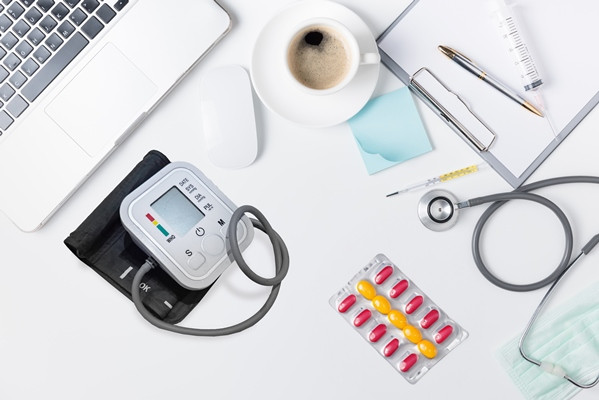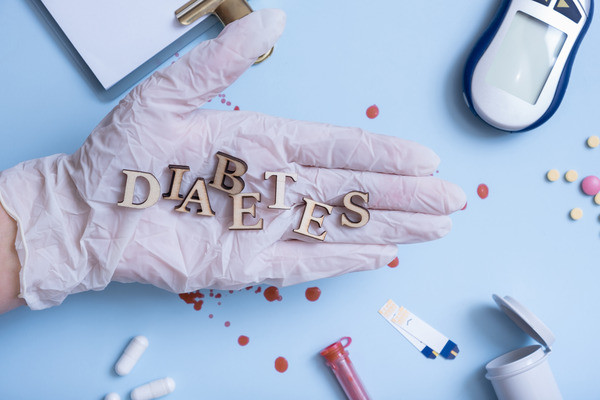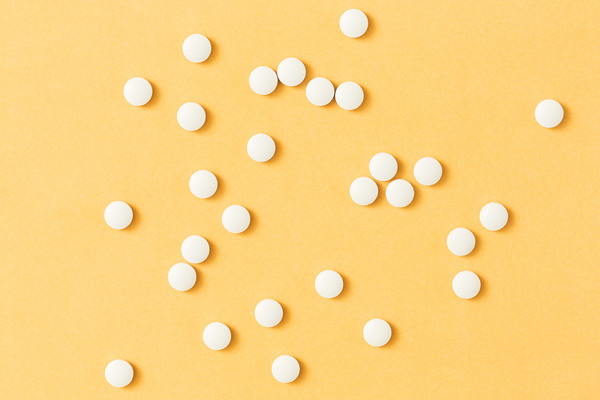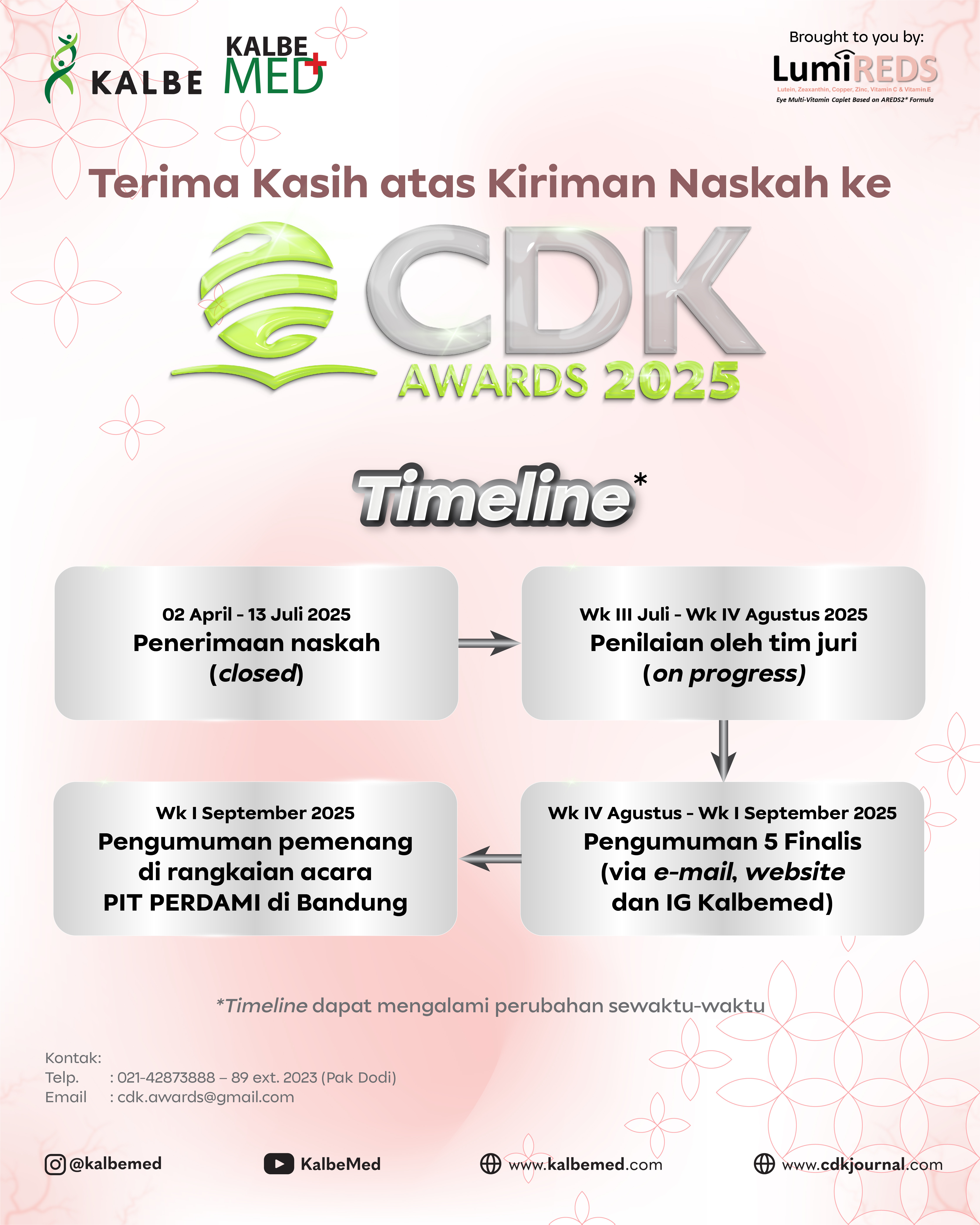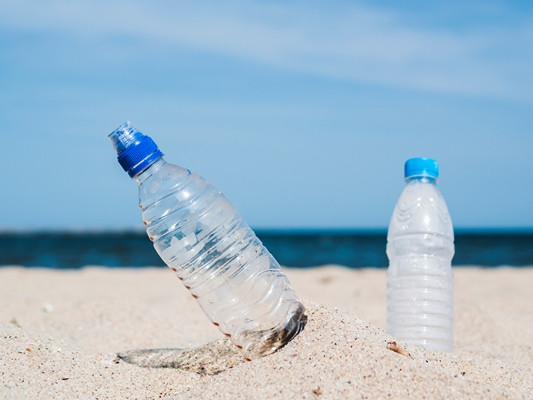
Meningkatnya produksi plastik dan penumpukan sampah plastik di seluruh dunia telah menghasilkan kontaminan mikroplastik dalam pasokan air dan makanan. Limbah plastik yang ada dapat mengalami proses penguraian oleh lingkungan, termasuk dari sinar matahari. Proses ini membuat plastik menjadi rapuh dan pecah. Materi yang tidak terurai sepenuhnya ini akan berubah menjadi potongan-potongan kecil yang disebut mikroplastik.
Mikroplastik didefinisikan sebagai partikel plastik yang berdiameter kurang dari 5 mm, serta mencakup nanoplastik yang ukurannya lebih kecil (kurang dari 1 μm). Produk polistiren sekali pakai, seperti bahan pengemas busa, gelas, dan peralatan makan, berkontribusi terhadap sampah plastik secara keseluruhan. Terdapat dua jenis mikroplastik, yaitu mikroplastik primer yang diproduksi untuk produk tertentu yang dipakai manusia (seperti sabun, deterjen, kosmetik, dan pakaian), serta mikroplastik sekunder yang berasal dari penguraian sampah plastik di lautan. Kedua jenis mikroplastik ini dapat bertahan di lingkungan dalam waktu yang lama dan berdampak pada kesehatan manusia. Berdasarkan hasil penelitian Ecological Observation and Wetlands Conservation menemukan bahwa mikroplastik dapat memasuki tubuh manusia melalui pernapasan, pencernaan, dan paparan terhadap benda plastik yang sudah mengalami pelapukan.
Mikroplastik dapat ditelan oleh makhluk hidup yang sangat kecil, seperti bakteri, amoeba, dan plankton yang hidup di perairan hingga akhirnya dimakan oleh pemangsanya seperti ikan atau hewan air lainnya, sehingga akan mengalami penimbunan di dalam tubuh hewan pemangsa tersebut. Kemudian mikroplastik dapat masuk ke dalam tubuh manusia, salah satunya melalui makanan, misalnya dengan mengonsumsi ikan atau hewan air yang tercemar limbah plastik, penggunaan garam saat pengawetan ikan, ataupun melalui penggunaan wadah makanan/minuman yang terbuat dari plastik.
Beberapa jenis mikroplastik yang umum mengkontaminasi makanan antara lain;
- Bisphenol-A (BPA). Bahan kimia untuk menghasilkan plastik polikarbonat yang kuat, seperti pada wadah makanan dan produk kebersihan.
- Ftalat (phthalate). Bahan kimia untuk menghasilkan plastik yang fleksibel, transparan, dan tahan lama seperti pada wadah makan.
- Dioksin. Bahan kimia yang merupakan produk sampingan herbisida dan pemutih kertas yang mencemari lingkungan.
- Polyethylene dan Polypropylene. Bahan kimia untuk kemasan plastik makanan, seperti polyethylene terephthalate (PET), high density polyethylene (HDPE), low density polyethylene (LDPE), dan polypropylene (PP).
Endapan mikroplastik dalam tubuh merupakan endapan benda asing yang tidak dapat dicerna atau diserap oleh tubuh, yang dapat menimbulkan iritasi. Bila dibiarkan terlalu lama maka akan terjadi peradangan yang bahkan dapat memicu timbulnya tumor bahkan kanker.
Salah satu studi juga menemukan bahwa adanya hubungan antara nanoplastik dengan penyakit Parkinson dan demensia. Pada tikus, nanoplastik bergabung dengan fibril α-synuclein untuk memperburuk penyebaran patologi α-synuclein di seluruh wilayah otak yang rentan yang saling berhubungan, termasuk induksi yang kuat dari inklusi α-synuclein pada neuron dopaminergik di substansia nigra. Hasil ini menyoroti hubungan potensial antara nanoplastik dan agregasi α-synuclein dengan penyakit Parkinson dan demensia.
Penyakit Parkinson (PD) dan demensia terkait secara patologis ditentukan oleh akumulasi protein α-synuclein pada neuron-neuron yang rentan di otak. α-Synuclein merupakan protein dengan berat molekul rendah, tetapi pada jaringan yang terkena PD, studi mikroskop elektron menunjukkan bahwa struktur fibril berinteraksi dengan lipid yang rusak dari berbagai organel, seperti lisosom dan mitokondria. Dengan meningkatnya nanopartikel di lingkungan, studi yang terkait dengan patobiologi α-synuclein dapat memberikan wawasan tentang jenis nanopartikel apa yang perlu dieksplorasi lebih lanjut sebagai faktor risiko potensial pada PD. Di antara berbagai jenis polutan plastik, peningkatan nanoplastik polistiren di lingkungan dari plastik sekali pakai, merupakan jenis partikel yang relevan untuk dieksplorasi untuk interaksi dengan α-synuclein. Paparan nanoplastik langsung dapat menghasilkan pembentukan de novo inklusi α-synuclein terfosforilasi yang matang pada neuron dopaminergik di substantia nigra. Hasil ini menyoroti potensi yang muncul dalam nanoplastik anionik yang dapat dieksplorasi lebih lanjut untuk lebih memahami kemungkinan peran dalam risiko dan perkembangan penyakit Parkinson.
Saat ini, memang belum ada penelitian terkait cara menanggulangi sampah mikroplastik. Namun kita bisa memulai dengan mengurangi penggunaan sumber dari mikroplastik, yaitu plastik, dalam keseharian, seperti:
- Utamakan menggunakan wadah makanan yang non-plastik saat menaruh makanan atau minuman
- Hindari minum minuman yang menggunakan botol plastik atau kemasan plastik
- Hindari memanaskan makanan dalam wadah plastik karena plastik akan terurai dan dapat larut ke dalam makanan
Mari tumbuhkan kesadaran untuk mengurangi penggunaan plastik dan selalu membuang sampah, termasuk sampah plastik, pada tempatnya.
Gambar: Ilustrasi (Sumber: Freepik)
Referensi:
- Rahmawati A. Mikroplastik: Wujudnya tak nampak dan dampaknya tak terduga [Internet]. 2023 Jun 14 [cited 2023 Nov 28]. Available from: https://ayosehat.kemkes.go.id/mikroplastik--wujudnya-tak-nampak-dan-dampaknya-tak-terduga
- Liu Z, Sokratian A, Duda AM, Xu E, Stanhope C, Fu A, et al. Anionic nanoplastic contaminants promote Parkinson’s disease–associated α-synuclein aggregation. Science Advances [Internet]. 2023 Nov 17 [cited 2023 Nov 28]. Available from: https://www.science.org/doi/10.1126/sciadv.adi8716

